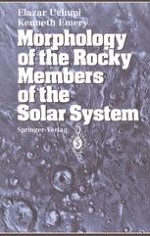1993 | OriginalPaper | Chapter
Outer Planets and Satellites
Authors : Professor Dr. Elazar Uchupi, Professor Dr. Kenneth O. Emery
Published in: Morphology of the Rocky Members of the Solar System
Publisher: Springer Berlin Heidelberg
Included in: Professional Book Archive
Activate our intelligent search to find suitable subject content or patents.
Select sections of text to find matching patents with Artificial Intelligence. powered by
Select sections of text to find additional relevant content using AI-assisted search. powered by
In contrast with the rocky planets, the gaseous planets beyond the Asteroid Belt consist of a rocky core mantled by thick ices of water, methane, and ammonia, liquid metallic hydrogen, and liquid molecular hydrogen (Hartmann 1983, p. 294). Jupiter may be experiencing an anomalously slow cooling because of condensation and settling of helium-rich droplets from a hydrogen-helium mixture; a similar process also may be occurring on Saturn (Klepeis et al. 1991). The satellites orbiting the gaseous planets have various origins ranging from accretion from a disk of gas from a previous larger satellite, to fragmentation, and reconsolidation (a process that may have occurred more than once), and capture. The internal structures displayed by these satellites include a total molten stage model except for a rigid thin solid crust on Io. However, Schubert et al. (1986) believed that there are problems with this molten model of Io and have proposed instead a model consisting of an Fe-S core, a solid mantle, a molten or partly molten asthenosphere, and a rigid crust. Models proposed by Schubert et al. for the other satellites include mostly rock (hydrated or dry silicates) covered by water and an ice crust (Europa), and differentiated bodies having rock cores covered by ice mantles and undifferentiated structures of homogenous ice rock mixtures. Thus, the tectonics and internal dynamics of these satellites are controlled by the rheology and viscosity of high-pressure and low-temperature forms of ice (Poirier 1982).
